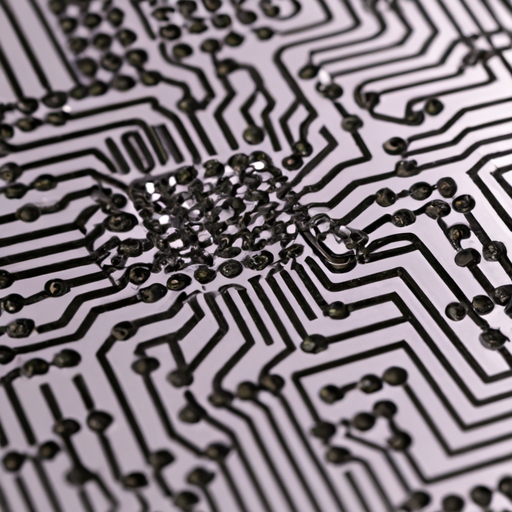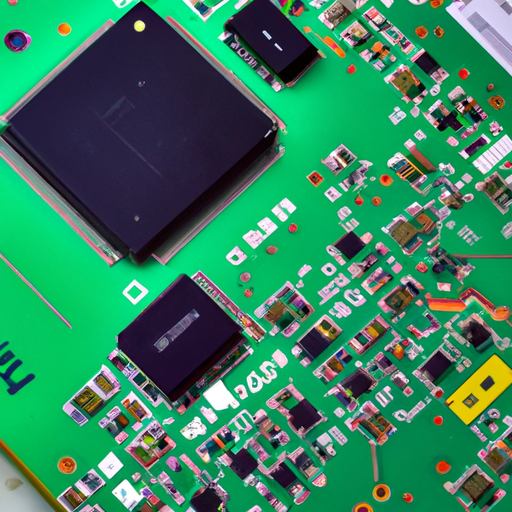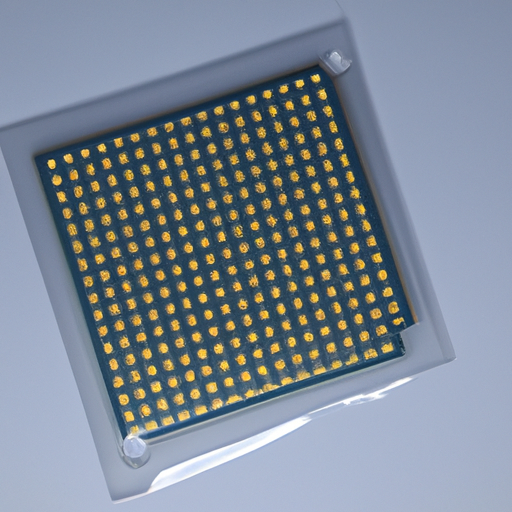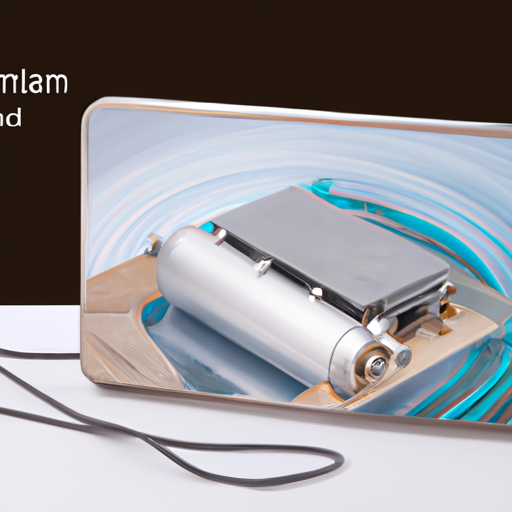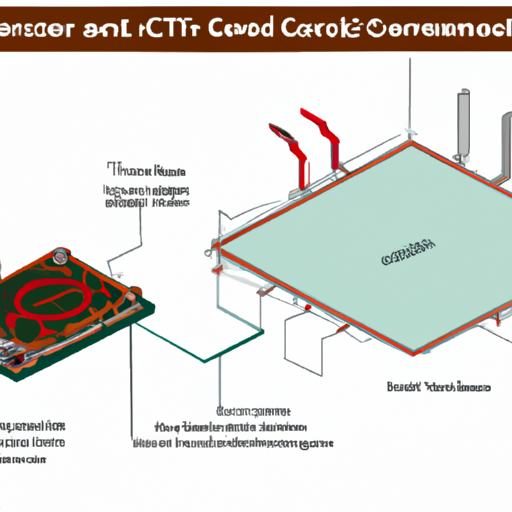What are the main application directions of digital integrated circuit design?
What are the Main Application Directions of Digital Integrated Circuit Design?
I. Introduction
Digital integrated circuit (IC) design is a critical field that involves the creation of electronic circuits that process digital signals. These circuits are the backbone of modern electronic devices, enabling functionalities that range from simple calculations to complex data processing. As technology continues to evolve, the importance of digital integrated circuits in various sectors has become increasingly pronounced. This blog post will explore the main application directions of digital integrated circuit design, highlighting their significance in consumer electronics, computing, telecommunications, automotive, industrial automation, medical devices, and the Internet of Things (IoT).
II. Consumer Electronics
A. Overview of Consumer Electronics Market
The consumer electronics market is one of the most dynamic sectors, characterized by rapid innovation and a constant demand for new technologies. Digital integrated circuits play a pivotal role in this market, powering a wide array of devices that enhance our daily lives.
B. Role of Digital Integrated Circuits in Consumer Devices
1. **Smartphones and Tablets**: Digital ICs are fundamental to the operation of smartphones and tablets, enabling features such as high-resolution displays, advanced camera systems, and efficient battery management. The integration of multiple functions into a single chip has led to slimmer devices with enhanced performance.
2. **Smart TVs and Home Entertainment Systems**: In the realm of home entertainment, digital ICs facilitate streaming services, high-definition video playback, and smart connectivity features. They enable seamless integration with other smart devices, creating a cohesive entertainment ecosystem.
3. **Wearable Technology**: Wearable devices, such as smartwatches and fitness trackers, rely heavily on digital integrated circuits for processing data, monitoring health metrics, and connecting to smartphones. The miniaturization of ICs has made it possible to incorporate sophisticated functionalities into compact form factors.
C. Trends and Innovations in Consumer Electronics
The consumer electronics industry is witnessing trends such as the rise of artificial intelligence (AI) in devices, increased focus on energy efficiency, and the integration of augmented reality (AR) and virtual reality (VR) technologies. Digital integrated circuits are at the forefront of these innovations, driving advancements that enhance user experiences.
III. Computing and Data Processing
A. Importance of Digital Integrated Circuits in Computing
Digital integrated circuits are essential for computing devices, providing the processing power needed for a wide range of applications. From personal computers to large-scale data centers, ICs are integral to the functionality and performance of these systems.
B. Applications in Personal Computers and Laptops
In personal computers and laptops, digital ICs are responsible for executing instructions, managing memory, and facilitating communication between components. The evolution of microprocessors and graphics processing units (GPUs) has significantly improved computing performance, enabling tasks such as gaming, video editing, and software development.
C. Role in Data Centers and Cloud Computing
Data centers rely on digital integrated circuits to handle vast amounts of data and support cloud computing services. High-performance ICs are crucial for servers, enabling efficient data processing, storage, and retrieval. The demand for cloud services has driven innovations in circuit design, focusing on energy efficiency and scalability.
D. Emerging Technologies: Quantum Computing and AI Processors
The future of computing is being shaped by emerging technologies such as quantum computing and specialized AI processors. Digital integrated circuits are being developed to support these advancements, promising to revolutionize data processing capabilities and solve complex problems that are currently beyond the reach of classical computing.
IV. Telecommunications
A. Overview of Telecommunications Industry
The telecommunications industry is a vital sector that connects people and businesses across the globe. Digital integrated circuits are fundamental to the infrastructure that supports communication networks.
B. Digital Integrated Circuits in Networking Equipment
1. **Routers and Switches**: Digital ICs are integral to the operation of routers and switches, enabling data packet routing and network management. These circuits ensure efficient communication between devices, facilitating internet access and data transfer.
2. **Base Stations and Mobile Networks**: In mobile networks, digital integrated circuits are used in base stations to manage communication between mobile devices and the network. The design of these circuits is critical for supporting high-speed data transmission and maintaining network reliability.
C. Impact of 5G Technology on Circuit Design
The rollout of 5G technology has introduced new challenges and opportunities for digital integrated circuit design. ICs must be optimized for higher frequencies, increased data rates, and lower latency. This has led to innovations in circuit design, enabling the development of advanced communication systems that support the growing demand for mobile connectivity.
V. Automotive Industry
A. Growth of Electronics in Vehicles
The automotive industry is undergoing a transformation, with electronics playing an increasingly important role in vehicle design and functionality. Digital integrated circuits are at the heart of this evolution, enabling advanced features and improving safety.
B. Applications of Digital Integrated Circuits in Automotive Systems
1. **Infotainment Systems**: Digital ICs power infotainment systems, providing features such as navigation, multimedia playback, and connectivity with smartphones. These systems enhance the driving experience and offer drivers access to a wealth of information.
2. **Advanced Driver Assistance Systems (ADAS)**: ADAS relies on digital integrated circuits to process data from sensors and cameras, enabling features such as lane departure warnings, adaptive cruise control, and automatic emergency braking. These technologies enhance vehicle safety and pave the way for autonomous driving.
3. **Electric and Autonomous Vehicles**: The rise of electric and autonomous vehicles has created new demands for digital integrated circuits. These vehicles require sophisticated ICs for battery management, power distribution, and real-time data processing to navigate complex environments.
C. Future Trends in Automotive Circuit Design
As the automotive industry continues to evolve, digital integrated circuit design will focus on enhancing connectivity, improving energy efficiency, and supporting the development of fully autonomous vehicles. Innovations in circuit design will play a crucial role in shaping the future of transportation.
VI. Industrial Automation and Control
A. Role of Digital Integrated Circuits in Industrial Applications
Digital integrated circuits are essential for industrial automation and control systems, enabling efficient operation and monitoring of manufacturing processes.
B. Applications in Robotics and Automation Systems
In robotics, digital ICs are used to control motors, process sensor data, and enable communication between robots and control systems. These circuits enhance the capabilities of robots, allowing for greater precision and flexibility in manufacturing environments.
C. Impact on Manufacturing Processes and Smart Factories
The integration of digital integrated circuits in smart factories has revolutionized manufacturing processes. These circuits enable real-time monitoring, data analysis, and automation, leading to increased efficiency and reduced operational costs.
VII. Medical Devices
A. Importance of Digital Integrated Circuits in Healthcare
Digital integrated circuits play a vital role in the healthcare sector, enabling the development of advanced medical devices that improve patient care and diagnostics.
B. Applications in Diagnostic Equipment
In diagnostic equipment, digital ICs are used to process data from imaging devices, such as MRI and CT scanners. These circuits enhance image quality and enable faster processing, leading to more accurate diagnoses.
C. Role in Wearable Health Monitoring Devices
Wearable health monitoring devices, such as heart rate monitors and glucose sensors, rely on digital integrated circuits to collect and analyze health data. These devices empower patients to manage their health proactively and provide valuable information to healthcare providers.
D. Future Directions in Medical Circuit Design
The future of medical circuit design will focus on miniaturization, energy efficiency, and connectivity. Innovations in digital integrated circuits will enable the development of more sophisticated medical devices that enhance patient outcomes.
VIII. Internet of Things (IoT)
A. Overview of IoT and Its Significance
The Internet of Things (IoT) refers to the network of interconnected devices that communicate and share data. Digital integrated circuits are fundamental to the functioning of IoT devices, enabling them to process information and connect to the internet.
B. Role of Digital Integrated Circuits in IoT Devices
Digital ICs are used in a wide range of IoT devices, from smart home appliances to industrial sensors. These circuits enable data collection, processing, and communication, allowing devices to operate autonomously and interact with users.
C. Challenges and Opportunities in IoT Circuit Design
The design of digital integrated circuits for IoT presents unique challenges, including power consumption, security, and scalability. However, these challenges also present opportunities for innovation, as designers seek to create efficient and secure circuits that meet the demands of the IoT ecosystem.
IX. Conclusion
A. Summary of Key Application Directions
Digital integrated circuit design is a multifaceted field with applications spanning various industries, including consumer electronics, computing, telecommunications, automotive, industrial automation, medical devices, and the Internet of Things. Each sector relies on digital ICs to enhance functionality, improve efficiency, and drive innovation.
B. Future Outlook for Digital Integrated Circuit Design
As technology continues to advance, the future of digital integrated circuit design looks promising. Emerging technologies, such as AI, quantum computing, and IoT, will drive the demand for innovative circuit designs that meet the evolving needs of various industries.
C. Final Thoughts on the Importance of Innovation in Circuit Design
Innovation in digital integrated circuit design is crucial for maintaining competitiveness in a rapidly changing technological landscape. As industries continue to evolve, the role of digital ICs will only become more significant, shaping the future of technology and improving the quality of life for people around the world.
X. References
A. Academic Journals
- IEEE Transactions on Circuits and Systems
- Journal of Solid-State Circuits
B. Industry Reports
- Gartner Research on Semiconductor Trends
- IC Insights Market Analysis
C. Books and Articles on Digital Integrated Circuit Design
- "Digital Integrated Circuits: A Design Perspective" by Jan M. Rabaey
- "CMOS Digital Integrated Circuits: Analysis and Design" by Sung-Mo Kang and Yusuf Leblebici
This comprehensive overview of the main application directions of digital integrated circuit design highlights the critical role these circuits play in modern technology. As we look to the future, continued innovation in this field will be essential for addressing the challenges and opportunities that lie ahead.

